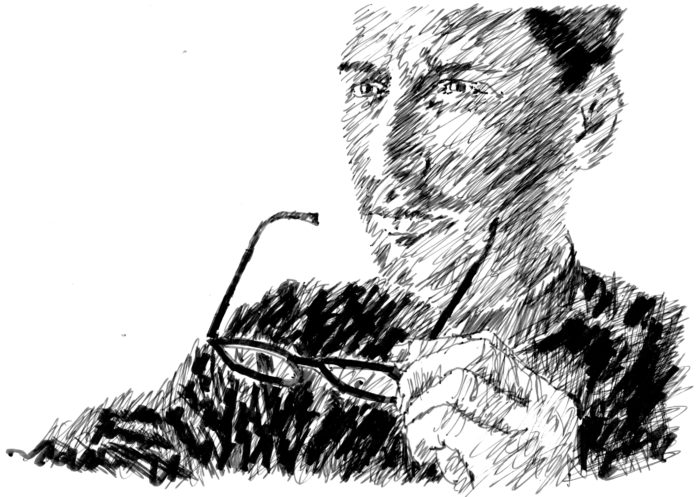By Ted Leonhardt
This story was told to me by a student of mine, who’s name I’ve changed to Sara. I met “Sara” when she attended one of my negotiation classes a few years ago. This story, which I’ve cleared with her for publication, prompted me to team up with fellow Overture member Jessica Knapp to offer a pandemic- inspired Negotiations for Creative in the Age of COVID-19 seminar in early January.
“Ted, I could see that Jon was already flipping through a document when the Zoom window opened. Then he took off his glasses as if in deep thought.”
Must be my proposal, I thought. Shit.
I could feel the perspiration beginning to form.
I’d planned to walk him through my pitch on our call. He’d texted and asked me to send my proposal ahead so we’d both have a copy. Not wanting to upset the mood or do anything to ruffle his feathers, I sent it. I knew it was a mistake even as I hit the Send button. Damn. Damn, damn, damn.
The only thing I like about Zoom is that they can’t tell I’m sweating.
I have a hard enough time asking for the money anyway, and now with COVID-19, I have to do it virtually. It’s taken me years to feel even vaguely comfortable asking for the money. Now it’s harder than ever to develop the kind of trusting relationship I’ve learned is essential to making a connection—a connection that results in a sale.
Jon, my prospect, was now leaning forward, both elbows on his desk and hands on head. Head down, staring at my proposal. I could see his bald spot.
“Sara, I thought we agreed the testing stage wasn’t necessary…?”
He’s just going to pick my process apart. This is going to be excruciating.
Never have I had the obstacles I have today: a raging pandemic, who knows when this will end; a gig economy that’s clearly rigged against me; a virtualized marketplace that commoditizes my value.
“Jon, I thought we agreed that testing would be a later stage. That we’d test after we’d cleared all the initial approvals…”
“What I’m worried about is the overall price.”
OK, I think, maybe we just can’t get there from here. And I remain silent—as I’ve forced myself to learn to do—watching Jon on the screen as he shuffles through the pages of my proposal. As the perspiration trickles down my back.
Then he picks up another document.
“I’ve got two other proposals. Both are priced lower than yours,” he says, looking up.
Now Jon has what must be my two competitors’ proposals laid out next to mine.
I’m thinking madly, “Is it just price? Who does he want to work with? He seems to be spending a lot of time with me. Why is he bothering?”
So in a moment of boldness I ask, “Who do you want to work with?”
Now he’s wiping his face with both hands. Clearly uncomfortable.
“Sara, we want to work with you.”
“Why? Why do you want to work with us?”
“We have a new head of purchasing. He’s demanding that we get price reductions from every vendor. He’s got my boss and his boss sold on the idea that every vendor has to play by these new rules. With Covid and the fear around the election, our business is…”
I continue to listen, but the fear is gone. I’m so glad I did my prep exercises. I can see the way forward now. This is a maybe that’s leaning in my direction. Leaning my way. I can feel my strength returning.
Most important: He hasn’t actually come out and asked for a price reduction.
Note to self: “Don’t let it go to your head, girl.”
“Jon, I know you’ve carefully compared us to others. You called at least two of my clients, and…”
“I called four of your clients.”
“OK, so are we going to be working together?”
“I have to get this through purchasing first.”
So Jon feels like he’s caught in the middle. Thinking now: “Offer to meet with purchasing? What?” Then the question comes to mind.
“Jon, what is it that makes you say you want to work with us? I think you said ‘we’ want to work with you.”
“Yes, it’s a ‘we.’ Sara, you know our category better than any of the others.”
A pause. “OK, it’s mine to lose,” I think.
“Jon, several thoughts come to mind. First, I could meet with purchasing and walk him through my proposal—it is a guy, right?”
“Yes, he’s a former Walmart purchasing agent. Learned it from the best, I guess.”
“Walmart,” I think. “Yes, they’re the best. Scary.”
“Okay, my second thought is, let’s get approval for a small information-gathering step. You and I can do the interviews together. Spend a couple days on Zoom with your clients, getting their reactions to your existing position and that of your competitors. How does that sound?”
Prep exercises
1: My appearance
The first thing I always do is look at how I’ll appear on camera. Lighting. Background. Props. I’ve found that it gives me a great deal of confidence to know that my expertise is well represented through how a prospective client – in this case, Jon – will see me.
Props that represent the work I’m known for are an important part of the look. I always make sure three or four of my best are clearly visible. No bookcases packed with titles by others, or digital backgrounds, for me. I know why people use these obvious, overused cliches. They’re trying to imitate what the home-based talking-head media figures do, forgetting that what their audience is interested in is them.
Getting “the look” right has always been important to me. Once I feel good about the way I appear in my surroundings, I can cross a large source of my anxiety off the list.
2: Credibility list
Next, I need to remind myself of my credibility. I know it seems strange, given my years of experience, that I still need to boost my cred. But for whatever reason, I do.
The technique I use most often is to simply make a list of the projects and events in my career that I feel provide the most credibility for the opportunity at hand. And because a mentor reminded me that my career started in childhood, I usually jot down a note about an early creative success.
3: What’s changed
Finally, I gather what I know about the individuals and the organization I’m about to present to—with an emphasis on what’s changed for them. In this case I knew they’d added several new executives to their senior management team. Although I didn’t know they’d added a Walmart-trained executive to lead their purchasing effort, it wasn’t surprising.
Those are my top last-minute prep exercises: my appearance, a credibility list and what’s changed. I use these three exercises in addition to all the work I put into studying a prospect, prior to even thinking about how I’d approach a creative assignment.
What happened?
Jon delved into the process of what to do to get purchasing on board. It was gratifying to know how committed he was to working with me and my little firm. But I knew Jon’s commitment was not enough by itself.
Jon was able to approve a small portion of his budget to do some research. He also suggested that he could fund our strategy team to build a case for a creative direction. Best of all, Jon wanted to help build a presentation for his senior management. Again, he was able to fund this on his own authority.
I guess you could call this win-win negotiating. And you also could say it showed the power of saying no. But I like to think it’s really more about having well-defined expertise.
As I like to say, “They can’t get what I do, and the way I do it, from anyone else but me.”
That’s my real source of power, and it’s yours too.
—-—
 Note from Ted: Overture member Jessica Knapp and I are teaming up to lead a negotiation seminar Jan. 11-15, 10-noon Pacific time. Each day where we’ll offer methods for you to get what you need to be successful in negotiating in the Age of COVID-19. Sign up here>>> You can reach me by email here: ted@tedleonhardt.com
Note from Ted: Overture member Jessica Knapp and I are teaming up to lead a negotiation seminar Jan. 11-15, 10-noon Pacific time. Each day where we’ll offer methods for you to get what you need to be successful in negotiating in the Age of COVID-19. Sign up here>>> You can reach me by email here: ted@tedleonhardt.com






